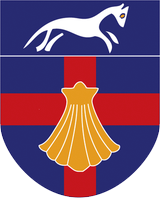Curriculum
At Radley Primary School our curriculum is a broad and balanced, knowledge-rich primary curriculum. Its content is delivered through a range of subject-specific projects, which last either a full or half term. Subject-specific projects cover art and design, design and technology, geography, history, computing and science. Maths is delivered through White Rose Maths, and English is taught using a text rich approach with Literacy Tree resources. We also use specialist schemes for PE (GetSet4PE), PHSE (myHappymind), music (Sparkyard) and RE (Discovery RE and Understanding Christianity).
Themes
At Radley CE Primary School, our curriculum is led by a number of different themes. These are the overarching aims of the National Curriculum, conceived by analysis of the national curriculum subjects, drawing out common themes important for our children to see and make links as their knowledge, understanding develops and grows progress through the school.
Subjects (disciplinary concepts and aspects)
The curriculum is designed around key concepts and aspects within each subject. A concept represents an abstract idea fundamental to a subject, while an aspect refers to a specific part or feature of that subject.
Our curriculum structure connects these concepts and aspects directly to the subjects we teach, ensuring that learning is meaningful and coherent. For example, in Geography, the overarching them of Humankind is explored through aspects such as Settlements and Land Use, as well as Human Features and Landmarks. Similarly, in History, the theme of Humankind is examined through concepts like Everyday Life, Hierarchy and Power, and Civilisations.
To ensure comprehensive coverage of the National Curriculum, each subject’s concepts and aspects are carefully aligned with the relevant programmes of study. This approach guarantees that pupils receive a broad and balanced education across subjects including Art and Design, Design and Technology, Geography, History, Computing, Science, and Mathematics.
This alignment ensures that our curriculum not only meets statutory requirements but also supports pupils in building deep, connected knowledge across their learning journey.
Progression framework (knowledge and skills)
At Radley CE Primary School, our curriculum is thoughtfully designed around clear programmes of study, key concepts, and subject aspects. These are carefully broken down into smaller, manageable component parts or ‘chunks’ to create a cohesive and coherent progression framework.
This progression framework spans from Nursery through to Year 6, outlining the essential knowledge and skills pupils need to acquire and master in order to make meaningful progress throughout their time at our school.
Our approach ensures that learning is well-sequenced and builds year on year enabling pupils to deepen their understanding and apply their knowledge confidently across subjects.
Teachers have the professional autonomy to adapt or refine these learning objectives at the lesson level. This flexibility allows them to create smaller, targeted steps tailored to support the needs of individual pupils or groups, ensuring that all children are fully engaged and can access the curriculum effectively to make strong progress.
Radley Curriculum Purpose Vision and IntentCurriculum map for 2025-26 coming soon...




